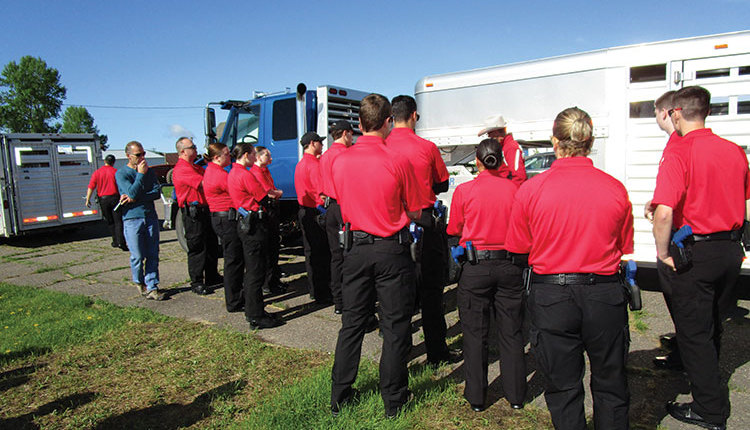
Life is constantly changing. Today, you can purchase binoculars that are A.I. enhanced to identify 9,000 different species of birds. That is a cool feature.
But it isn’t just the world of bird watching that is changing — so is the world of taxation. In the beginning of July, the One Big Beautiful Bill Act (OBBBA) passed and it is the law of the land. Now is the time to get out the binoculars and take a close look at all the changes coming up. Some are only temporary and are going to fly away, just like nervous birds. Let’s dig in.
Passed back in 2017, the Tax Cuts and Jobs Act contained a lot of provisions that were set to expire in 2025. OBBBA makes many of them permanent, including the child tax credit, which has also been increased to $2,200. The larger standard deductions are here to stay. Personal exemptions are eliminated. Most dairy farmers are familiar with these current structures. However, there are other sweeping changes to be aware of.
First of all, there has been a dramatic shift away from green energy projects and alternate energy, and it kicks in soon. The Residential Clean Energy Credit that provides a 30% tax credit toward the cost of buying and installing solar panels or other energy-saving devices was scheduled for phaseout in 2033. Those credits now expire at the end of the year. To claim them, you need to start construction by the end of this year. The credit to buy new and used electric vehicles ends even sooner on Sept. 30. This is bad news for auto manufacturers who retooled to meet this market. If you want the $7,500 credit on new vehicles or the $4,000 credit on used vehicles, you must act soon.
For those interested in buying a new car, one aspect of OBBBA that might appeal to dairy farmers is a deduction of up to $10,000 in interest on any car assembled in the U.S. The good news is you don’t have to itemize to claim this deduction. The interest deduction is available between 2025 and 2028 with phaseouts for individuals earning more than $100,000 or $200,000 for married couples.
During the 2024 presidential election, there were some promises made that the OBBBA honors. From 2025 through 2028, employees can deduct up to $12,500 a year in overtime pay (or $25,000 if they are married and filing jointly). There are phaseouts for single filers with modified adjusted gross income (MAGI) of more than $150,000, or joint filers with MAGI greater than $300,000. Another promise concerned tip income, and between 2025 through 2028, eligible workers can deduct up to $25,000 a year. Again, there are some phaseouts for single and joint filers earning more than $150,000 or $300,000 respectively.
Trump Accounts, another OBBBA provision, gives parents of children born between Jan. 1, 2025, and Dec. 31, 2028, eligibility for $1,000 in federal funds to establish a tax-advantaged savings account for their offspring. Parents, grandparents, or other people can annually contribute up to a combined $5,000 of after-tax contributions to the account. The money is invested in a fund that tracks a stock index and grows tax deferred. Contributions can be made until the child turns 18, at which point withdrawals are permitted. These accounts are structured somewhat similarly to Roth IRAs but with additional restrictions.
Years ago, I had a college German instructor who complained that changes in the tax code discouraged charitable giving. He was right; it is a deduction that bounces around like a basketball. Sometimes you can only get the charitable deduction by itemizing; other times, different rules apply. Under the new law, there are some rather complicated changes. Starting in 2026, if you take the standard deduction and are married filing jointly, you can deduct $2,000. But taxpayers who itemize and deduct charitable contributions are — for the first time — subject to a new limit on the amount they can deduct. They can only deduct contributions to the extent they exceed 0.5% of their adjusted gross income. There are other existing rules for people who itemize that limit the charitable contribution further. If you are planning on making large charitable contributions, talk to a tax professional before proceeding.
When OBBBA passed, the Social Security Administration sent emails to everyone receiving Social Security benefits explaining that thanks to the passage of the bill, only 12% of Social Security beneficiaries will now pay taxes on their benefits, compared to 36% today. This is a little bit misleading. The reason for the change is a hike in the standard deduction, not exemptions for Social Security income. Starting in 2025, those 65 or older will be eligible for an additional standard deduction of $6,000. This is a bonus deduction — it comes on top of the existing boost of the $2,000 deduction for single filers who are 65 years old or older (for married couples filing jointly — 65 years or older — it’s $1,600 for each spouse). So it is possible for a married couple who are 65 years old or older and filing jointly to have a standard deduction of $46,700. Again, these are short-term deductions through 2028. There are phaseouts for taxpayers whose MAGI is too high.
Finally, under the new tax bill, capital gain tax rates are still favorable to dairy farmers. The law bumps up the estate tax exemption from $13.99 million in 2025 to $15 million per person or $30 million for a married couple in 2026. After that, it will be adjusted for inflation.
The One Big Beautiful Bill Act was very controversial. Cuts were made to Medicaid to pay for a portion of this bill’s massive costs. Only time will tell what impact all these changes will have on our economy.









